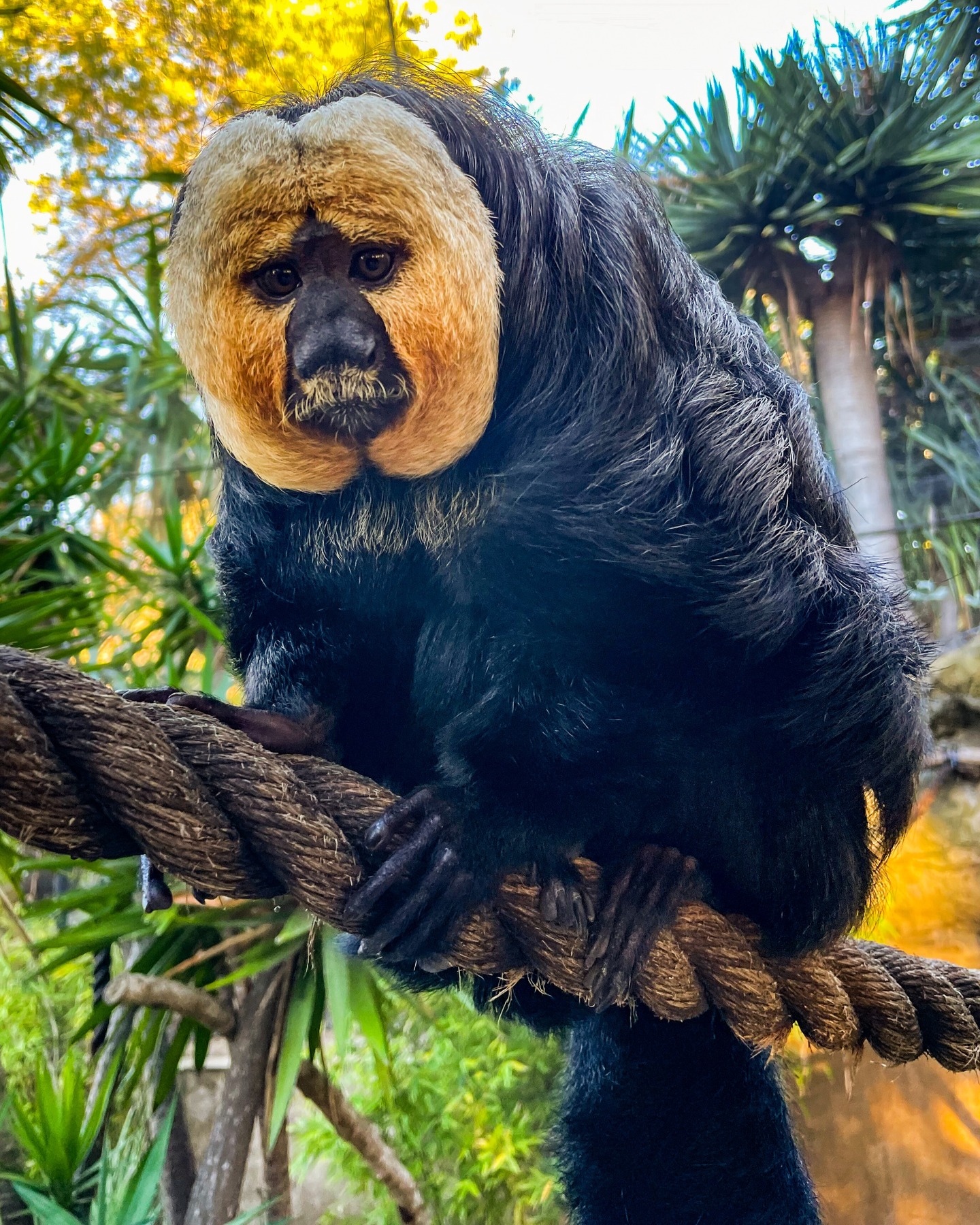- White-faced saki monkeys exhibit striking sexual dimorphism, with males and females having distinct fur colors.
- The social behavior and diet of white-faced sakis are adapted to their arboreal lifestyle and forest environment.
- Conservation efforts are crucial for the protection of white-faced saki monkeys due to habitat loss.
- Understanding captive care and management provides insights into species preservation.
- Engaging with primates like Calabaza and Gigi fosters a deeper appreciation of biodiversity.
White-faced saki monkeys—Calabaza and Gigi—invite us into their world with a curious glance and a perennial nut feast, each characteristic reflects their species’ unique biological and environmental adaptations. These primates are part of the Pithecia genus and are native to the dense rainforests of the northern regions of South America. The distinct appearance from which they derive their name is immediately noticeable due to sexual dimorphism, a rare trait in the primate kingdom. The male white-faced saki, like Calabaza, is characterized by a striking white face that contrasts with their predominantly dark fur. In contrast, the female, exemplified by Gigi, retains a more uniform greyish-brown coloration. This characteristic difference between genders is an evolutionary advantage, influencing social structures and mating behavior within their groups.
Social structure and lifestyle play fundamental roles in the survival of white-faced saki monkeys. These primates are quintessentially arboreal, residing high in the canopy. Their muscular hind limbs facilitate impressive jumping abilities, necessary for navigating the treetops. Social units are typically small, consisting of monogamous pairs and their offspring. Unlike other primate species, white-faced sakis exhibit a cohesive family structure where both parents take active roles in the nurturing and protection of their young.
Dietary habits of white-faced sakis indicate their adaptability to the rainforest ecosystem. Their primary diet consists of fruit, seeds, and nuts, with a smaller proportion of leaves and insects, which cater to their nutritional needs for maintenance and growth. Adaptations such as strong jaws allow them to crack hard nuts, essential in their seasonal survival strategy. The nutritional variety and availability are essential for maintaining their health in the wild and influencing reproductive success.
In the realm of conservation, white-faced sakis face significant challenges due to habitat destruction and fragmentation. The encroachment of agriculture and human settlement into rainforest ecosystems has led to a decrease in their natural habitat. Conservation efforts are vital, focusing on habitat protection and restoring degraded forest areas. Additionally, understanding the ecological role of the white-faced saki within its environment aids in biodiversity conservation. Programs aimed at preserving rainforest corridors are critical for maintaining genetic diversity and enabling natural behaviors crucial to the primates’ survival.
Captive management of species like the white-faced saki is pivotal in fostering insights that aid in their preservation. Institutions such as zoos house these primates not only to provide sanctuary to individuals like Calabaza and Gigi but also as part of broader conservation education efforts. Curated environments simulate aspects of their native habitats, ensuring that their physical and psychological needs are met. Hands-on experiences with such primates provide valuable data on their reproductive habits, dietary preferences, and social interactions, all of which inform in situ conservation strategies.
Engaging with primates like Calabaza and Gigi offers an invaluable opportunity to promote a deeper understanding of biodiversity. This interaction cultivates appreciation for these creatures and the ecosystems they inhabit. Appreciation often translates into action; as people adopt more sustainable lifestyles and support conservation efforts, they contribute to the broader mission of preserving global biodiversity.
In summary, Calabaza and Gigi, the white-faced sakis, stand as ambassadors of their species, highlighting both their unique traits and the broader environmental challenges they face. Their presence in captivity and their captivating nature provides a lens through which we can understand and appreciate the complex interdependencies within rainforest ecosystems. By focusing on their dietary habits, social structures, and conservation needs, we gain insights into how best to protect and sustain their populations, both in the wild and managed care settings. Their story is a compelling call to action for conservation and a reminder of the vital role every species plays in the tapestry of life.
*****
Source Description
Swinging by to say, “Hi!” are Calabaza and Gigi the white-faced sakis! 👋🐒
Despite getting their name from the appearance of the males of the species’ white fur around their faces, white-faced saki monkey females have overall brown fur. This sexual dimorphism makes it easy to tell Calabaza and Gigi apart!
📸: Keeper Maureen
Alt-text: Close-ups of the white-faced saki monkeys. In the first, Calabaza (and the light-colored fur around his face) stares curiously at us. In the second, Gigi drops by as she munches on a freshly shelled nut.


